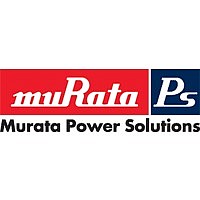PTGL18AR6R8M6B72B0 Murata Electronics North America, PTGL18AR6R8M6B72B0 Datasheet - Page 18

PTGL18AR6R8M6B72B0
Manufacturer Part Number
PTGL18AR6R8M6B72B0
Description
THERMISTOR
Manufacturer
Murata Electronics North America
Datasheet
1.PRF21AR471QB5RA.pdf
(84 pages)
Specifications of PTGL18AR6R8M6B72B0
Lead Free Status / RoHS Status
Lead free / RoHS Compliant
!Note
• This PDF catalog is downloaded from the website of Murata Manufacturing co., ltd. Therefore, it’s specifications are subject to change or our products in it may be discontinued without advance notice. Please check with our
• This PDF catalog has only typical specifications because there is no space for detailed specifications. Therefore, please approve our product specifications or transact the approval sheet for product specifications before ordering.
sales representatives or product engineers before ordering.
!Note
No.
10
(*) Measure resistance after the test by applying voltage of less than 1.5Vdc by a direct current of less than 10mA after product is left at 25±2°C for 2 hours.
Above mentioned soldering in "4. Adhesive Strength" and "5. Vibration" is done under the following conditions at our site.
1
2
3
4
5
6
7
8
9
Specifications and Test Methods
PRG18/21BB Series
#Glass-Epoxy PC board
#Standard land dimension
#Standard solder paste
#Standard solder profile
Above conditions are mentioned in Notice.
Operating Temp.
Resistance Value (at 25°C)
Withstanding Voltage
Adhesive Strength
Vibration
Solderability
Solder-heatability
Temperature Cycling
Humidity Test
High Temperature
Load Test
• Please read rating and !CAUTION (for storage, operating, rating, soldering, mounting and handling) in this catalog to prevent smoking and/or burning, etc.
• This catalog has only typical specifications because there is no space for detailed specifications. Therefore, please approve our product specifications or transact the approval sheet for product specifications before ordering.
Item
-10 to 60°C
The resistance value should be within the specified
tolerance.
Without damage
There is no exfoliation sign of electrode.
Normal appearance
Resistance change: not to exceed ±20% (*)
Min. 75% electrode is covered with new solder.
Resistance change: not to exceed ±20% (*)
Normal appearance
Resistance change: not to exceed ±20% (*)
Normal appearance
Resistance change: not to exceed ±20% (*)
Normal appearance
Resistance change: not to exceed ±20% (*)
Normal appearance
Resistance change: not to exceed ±20% (*)
Rating Value
Chip Type Specifications and Test Methods
Temperature range with maximum voltage applied to PTC.
After applying maximum operating voltage for 3 mins. and
leaving for 2 hrs. in 25°C, measured by applying voltage of less
than 1.5Vdc (by a direct current of less than 10mA).
We apply 120% of the maximum operating voltage to PTC by
raising gradually for 180±5 secs. at 25°C. (A protective resistor
is to be connected in series, and the inrush current through
PTC must be limited below maximum rated value.)
EIAJ ET-7403 term 9
Soldered PTC to PCB and add the force of 5.0N in the direction
as shown below.
JIS C 5102 term 8.2
JIS C 5102 term 8.4
JIS C 5102 term 9.3
Times: 5 cycles
JIS C 5102 term 9.5
40±2°C, 90-95%RH leave for 500±4 hrs.
JIS C 5102 term 9.10
60±3°C (in air), PTC is applied maximum operating voltage for 1.5
hrs. on and 0.5 hrs. off. This cycle is repeated for 1000±10 hrs.
Soldered PTC to PCB
Vibration: A 10-55-10Hz (1 min.)
Width: 1.5mm
Vibrate for 2 hrs. in each of 3 mutually perpendicular planes
for a total of 6 hrs.
Solder: Sn 63%/Pb 37% (or 60/40%)
Solder temp: 230±5°C
Soaking time: 3±0.5 s.
Soaking position: Until a whole electrode is soaked
Solder: Sn 63%/Pb 37% (or 60/40%)
Flux: Solder paste containing less than 0.2wt% of chlorine.
Preheating: 150±5°C 3mins.
Peak temp.: 260±5°C 10±5 s. (reflow)
PCB: Glass Epoxy PCB (JIS C 6484)
Step
1
2
3
4
Room temp.
Room temp.
Temp. (°C)
+85 +3, -0
-20 +0, -3
Method of Examination
PTC
F
Time (min.)
10-15
10-15
30
30
Glass Epoxy PCB
F=5.0N
F
R90E.pdf
17
07.3.19
1





















